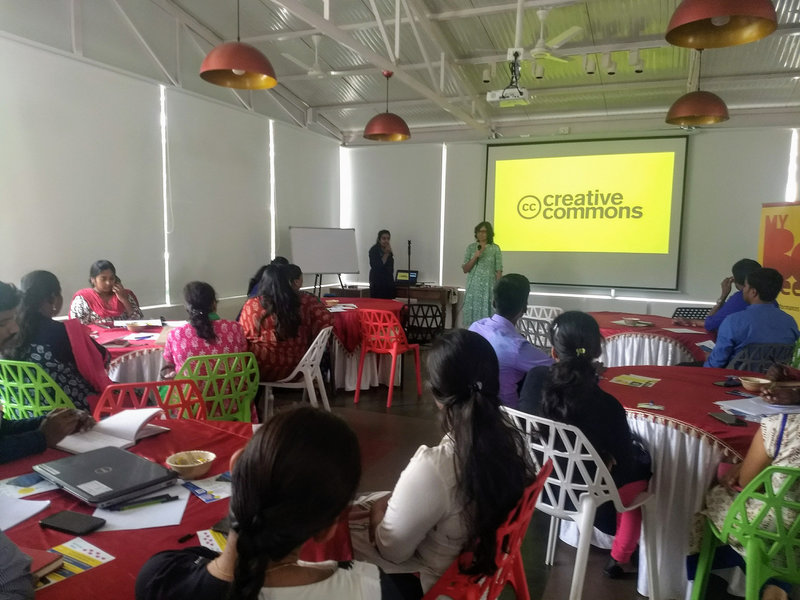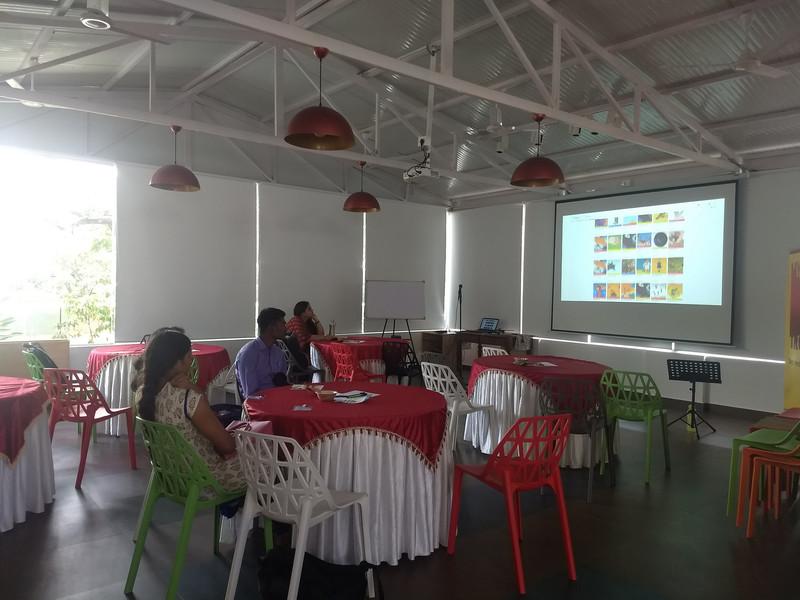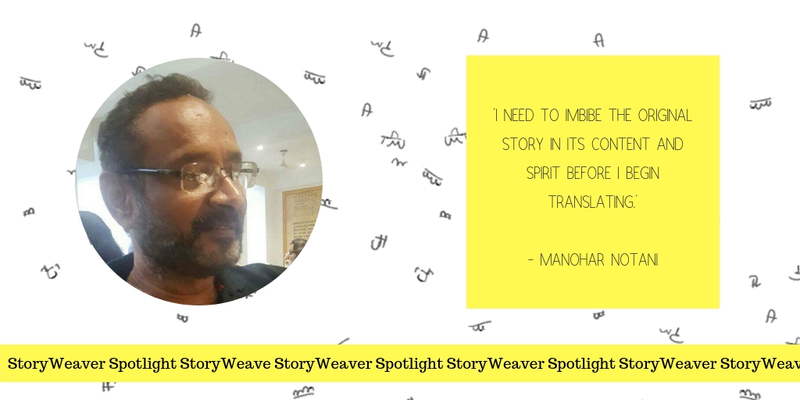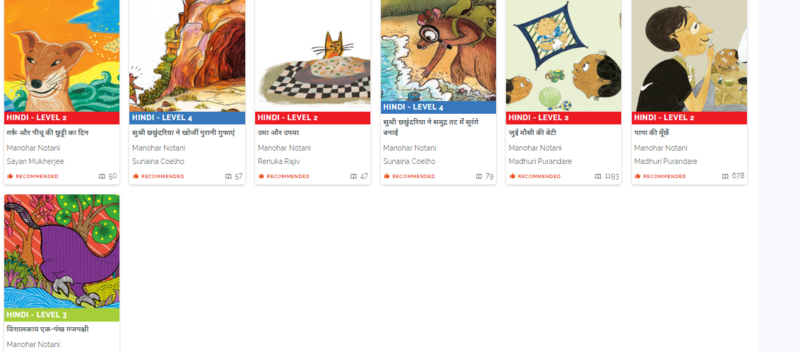We are looking for a Project Manager
Posted by Priyanka Sivaramakrishnan on May 28, 2019-This position is now closed-
Pratham Books (www.prathambooks.org) is a not-for-profit children’s book publisher that was set up in 2004 to publish good quality, affordable books in many Indian languages. Our mission is to see ‘a book in every child’s hand’ and we have spread the joy of reading to millions of children in India. As a publisher serving every child in India, Pratham Books has always pushed the boundaries when it comes to exploring innovative ways in which to create access to joyful stories and have been fortunate in finding partners to collaborate with who share this vision.
In 2015, Pratham Books’ increased its footprint by going digital. As an industry leader, we were one of the first publishers in the country to open license our content. All this content is now available on StoryWeaver, which is a digital platform that hosts stories in languages from India and beyond, so that every child can have an endless stream of stories in her mother tongue to read and enjoy. The stories can be read, translated, versioned or downloaded for free. All stories on the platform are openly licensed.6
We are looking for a Project Manager for StoryWeaver
 Illustration by Kabini Amin from BDum Dum-a-Dum Biryani! by Gayathri Tirthapura
Illustration by Kabini Amin from BDum Dum-a-Dum Biryani! by Gayathri Tirthapura
This position will work closely with the StoryWeaver Product team to support the operations of StoryWeaver. The role would involve project co-ordination, anchoring product enhancements, nurturing on ground relationships and support reporting and documentation.
Key Responsibilities:
- Work closely with the internal teams to implement StoryWeaver’s operational plans
- Project level support and coordination across various teams to ensure timely completion of project deliverables
- Track and monitor user trends and usage data to drive future product enhancements
- Anchor product enhancements through user research, requirement analysis, design and communication briefs to tech implementation
- Support the core team in reporting, documentation, campaign processes
- Drive on ground testing beds for key features and partner engagement
Required skills
- Proven experience as a Project manager
- Excellent organization skills
- Excellent verbal and written communication skills in English
- Sophisticated ICT skills
- Willing to travel to all project locations
- 2-4 years of experience
Nice to have but not mandatory:
- Experience working with non-profits
- Masters in Business Administration, Marketing or a related field would be a plus
Location:
This is a full-time position for 1 year and is based out of Bangalore
Compensation:
Salary will be commensurate with qualification and experience.
Write to us:
Email your resume with ‘Project Manager - StoryWeaver’ in the subject line to [email protected]
Be the first to comment.
StoryWeaver in Action: My First Workshop
Posted by Remya Padmadas on October 15, 2018
Bhavini Pant, Assistant Editor, StoryWeaver attended and helped conduct her first ever StoryWeaver workshop last month in Bengaluru. She shares her experience in this blog post.
Working behind the scenes of StoryWeaver can be unpredictable. On some days, things seem calm and almost monotonous. On other days, I can't believe I'm working for a tech platform given how things decide to work (or stop working) quite randomly. In between the zeros and ones, I'm certain there's a cheeky monster laughing at us when we splutter, "But.. but.. this isn't supposed to be happening!"
Unpredictable as the days may be, it can become a little routine spending time in front of a screen. When I was invited for my first StoryWeaver workshop on 6 September, I was happy for the chance to step out of office and meet new faces. This workshop was one of the many conducted by our Partnerships team to introduce StoryWeaver to educators. New recruits to StoryWeaver are also encouraged to participate to fully understand the platform and how new users experience StoryWeaver.
The venue was a large, but cosy space on the terrace of a building in Koramangala, Bengaluru. People from a wide variety of organisations had signed up for the workshop. They represented different aspects of education, technology and child welfare which made for an interesting assortment of participants. There was ChildFund India (who work with children as young as 1 year olds), Meghshala (who empower teachers to go beyond textbooks and provide quality education), eVidyaloka Trust (who empower rural India through quality education using technology), Gubbachi Learning Community (who work on bridge learning programmes for school drop-outs) and Caring With Colour (who work on arts integration and activity-based learning). Some participants had travelled all the way from Mysore (Pratham, Learning Spaces) and Hyderabad (Aga Khan Foundation) for the workshop!
As participants started trickling in, some confident, some a little nervous I was reminded of my previous job where I would take workshops with educators on a fiction-reading program for school children. Teachers are almost unthinkingly expected to take the lead in a classroom. When I was teaching, I often missed the luxury of learning that comes with being a student. I imagine that some of the participants felt the same, for they welcomed the chance to be learners again: asking questions, developing and sharing their insights, putting pieces together.

Initially when one of the facilitators began demonstrating StoryWeaver by telling us a story from the platform, my attention was drawn to her narration. And then, quite by chance, my gaze slid to the participants. I was thrilled to see them smiling along with the story. My heart smiled with them. It felt wonderfully uplifting to see participants' eyes light up, to see them laugh quietly during the funny bits. When a Read-Along story was demonstrated, lots of participants shared different ways they could anticipate educators using the feature. It was heartening to see educators explaining cross-disciplinary uses for Read-Along stories – that while the storyline could be used to introduce say, a mathematical concept to children, the narration and highlighted words could be used to demonstrate pronunciation, grammar and other language concepts.
Once the participants began working on their own stories, the space was buzzing with questions, suggestions and observations. Translated stories, in particular invited much discussion among the teachers. They debated the choice of words and their reasons for why a certain word should or should not be used. Eventually, some participants chose to translate the same story on their own as part of the exercise on creating a story!
The workshop was a good chance for me to cleanse my content manager palate. While we’re constantly working on increasing content on StoryWeaver for our users, I was able to see how a person new to StoryWeaver could be overwhelmed at the prospect of browsing through 9,000+ stories. We’re continually trying to make the experience of searching for stories faster and easier. Apart from filters, the teachers were also introduced to Lists - a section on StoryWeaver which has curated sets of stories based on areas which are relevant both in the classroom and outside it. Bright and colourful Category Cards (which appear when you scroll down the home page a little) also help organise all stories on the platform. Since the categories reflected subjects (eg. History & Culture) as well as broad themes (eg. Humour), we could see educators nodding and smiling satisfactorily.
In the end, when participants were filled with glee and pride to see their published story showing up on ‘New Arrivals’, we shared their thrill of creating something original.
As a former teacher, it was deeply moving for me to see educators taking control of the kind of material they would like to use and create for their children. Teachers are often expected to effect far-reaching changes in children but are not supported or encouraged as much as they need to be. Hopefully, StoryWeaver can be a space that addresses this imbalance while being easy and fun to use.
Be the first to comment.StoryWeaver Spotlight: Manohar Notani
Posted by Amna Singh on October 01, 2018Manohar Notani is an engineer by qualification, but over time, realized that engineering was not his cup of tea. He says 'This realization of being a fourth idiot came somewhat late'. He is now happy in the world of words and we are lucky to have his skills as a Hindi translator. His transaltion of MIss Bandicota Bengalensis Digs up the Seashore won the Hindi book of the Year award at FICCI.

Q: What is your personal relationship to language and translation?
A: It should be, and should sound ‘natural’. I don’t like to treat language as a mere means of communication. Language is an independent entity itself. Hence, my utmost endeavor is to ingest the concept(s), thought(s) presented in the ‘original’ and then present them in ‘my’ language as if they were never alien to it.
Q: When you’ve been given a story to translate, what’s your process, and how long does it generally take?
A: It all depends on the fluidity and cogency of the original. If the given story has a natural spontaneity and mirth in it, that ‘wow’ element will follow easily and naturally in my translation too. Otherwise, I have to have 3-4 reading and re-reading sessions prior to translating it. In short, I need to imbibe the original story in its content and spirit.
Q: What do stories in translation bring to young readers?
A: Pure pleasure, at least, if nothing else.
Q: How did you cultivate the skills needed to translate books for children?
A: Keeping alive and kicking my child within, through perseverance though.
Q: You’ve translated many stories for us. Which has been your favourite to work on?
A: Miss Bandicota Bengalensis Digs Up the Seashore , of course.

Q: What is the hardest thing about translating from English into Hindi? How do you navigate words or phrases that are tricky to translate?
A: Read, read, and read a lot. One has to have a rich ‘working’ vocabulary. Moreover, I invest a lot in books, dictionaries, subscribing to online dictionaries etc.
Q: Tell us something about how did you go about translating 'Miss Bandicota'? And how do you feel about the outcome?
A: To translate a story of Miss Bandicota’ s caliber, one needs to have the ‘feel’ of its milieu and throw one’s imagination to childlike tantrums.
Q: How do you feel when your story reaches the child?
A: It’s a sheer, yet indefinable pleasure.
Q: How else do you think we can join hands to take more stories to more children in more languages.
A: By having a strong faith in storytelling as a strong device for making our universe a better habitat.
Q: What type of person do you think makes the best translator for children’s stories?
A: One who has a knack for nonsense.
Q: Do you have any advice for anyone interested in becoming a translator?
A: Be a perpetual yet an untiring learner.
Q: A book you'd like to recommend to other translators?
A: The God of Small Things and White Tiger.
Be the first to comment.